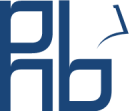What is Lice?
Lice is an infection of the hair and skin of humans with arthropods (insects) called Pediculus capitis (head lice), Pediculus humanus (body), and Phthiris pubis (pubic lice). Head and body lice have slightly different appearances when viewed under a microscope, and display different behaviour patterns, but are genetically identical.
Head lice lay nits on the shaft of hair (usually around the ears or nape of the neck), while body lice live and lay eggs on clothing; moving onto the body only to feed. Pubic lice are easily differentiated from body and head lice, and live on the hair of the genitalia, and – occasionally – on eyebrows and lashes. Infestation with body lice is of public health importance because three diseases are transmitted by bacteria that are able to infect Pediculus humanus, namely, trench fever (agent, Bartonella quintana), relapsing fever (Borrelia recurrentis), and epidemic typhus (Rickettsia prowazekii). All three infestations are typically associated with military or civilian populations disrupted by war, but sporadic infections may occur.
Lice may be broken down into three main types:
- Pediculus humanus capitis (head louse);
- Pediculus humanus corporis (body louse, clothes louse); and
- Pthirus pubis (“crab” louse, pubic louse).
Who can get lice?
Head lice infestations are common across all social strata, but infestations are more common amongst school-going children, from 2-12 years of age. Body lice infestations have been associated with wars, overcrowding, extreme poverty, and homelessness. Pubic lice are sexually transmitted.
Where does head lice occur in South Africa?
All forms of lice occur in South Africa, although prevalence studies have never been done. Outbreaks of head lice occur commonly at schools across racial and socio-economic strata. Reports of head lice in South African children have anecdotally increased following withdrawal of a number of anti-lice preparations.
How are lice transmitted?
Head lice are transmitted through close proximity with infested persons, or through sharing of combs and hair products. Body lice are transmitted through shared clothing or physical contact with infected persons. Public lice are transmitted through sexual contact. Transmission of public lice is not prevented by condom use as lice live in genital hair and not on mucous membranes.
How does lice affect animals?
Human lice do not infest animals. Humans are the only hosts for Pediculus humanus/capitis and Phthiris pubis. The closest genetic relatives to human lice are Pediculus schaeffii, which is exclusively found on chimpanzees, and the Phthiris species which are found on gorillas.
It is thought that human lice evolved from a common lice species with these around 13 million years ago. Animal lice generally do not infest humans.
What are the signs and symptoms of lice?
When lice bite, they inject an anticoagulant and an anaesthetic substance. Three to four weeks after infestation, these proteins elicit an immune reaction, manifested as itching. A rash is usually not present. Occasionally, secondary bacterial infections of the skin or scalp may occur when scratching damages the skin.
Persons with lice may develop secondary impetigo (a mild skin infection). Head lice lay nits (eggs) on the shafts of hair, and when the hair grows the empty nit cases may become visible. Infection with body and public lice usually manifest by itching. The nits of body lice may be seen on clothing, particularly in the seams.
How is lice infestation diagnosed?
Lice infestation is diagnosed through the visualization of adults or nits (eggs) and recognition of their typical body shape. A magnifying glass may be helpful, as lice have a characteristic shape, and are 1-3mm in length. Adult lice may vary in colour depending on environmental or host conditions. Lice combs may also be helpful in extracting adults and nits.
How is lice infestation treated?
Head and public lice may be treated using mechanical interventions, topical anti-louse agents or oral treatment. Mechanical interventions include shaving, which is effective, or manual removal of adults and nits by hand or using a fine-toothed lice comb. This has to be repeated every 1-3 days, but frequent re-infestations occur. Topical anti-lice agents include the use of pediculocides (permethrin, permethrin combined with piperonyl, benzyl benzoate, malathion) or agents that stifle the lice such as dimethicone. Resistance to insecticides such as permethrin has been reported. Presently in South Africa, permethrin-containing products including Skabi-Rid®, Para Plus Lice Spray®, Para Special Lice Spray® and Spregal®. Dimethicone oil in a 4% solution is available as Controlice®. Body lice infestation may be treated by washing clothes at a temperature of >50°C, which eliminates nits, and washing with a scabicidal lotion (Ascabiol®).
How can lice be prevented?
No methods are 100% effective for the treatment of head lice, and – once infested – regular inspections and combing should take place until seven to ten days after the last nits are visible and have been removed. Body lice infestation may be prevented through personal hygiene, and washing and/or ironing of clothes.


